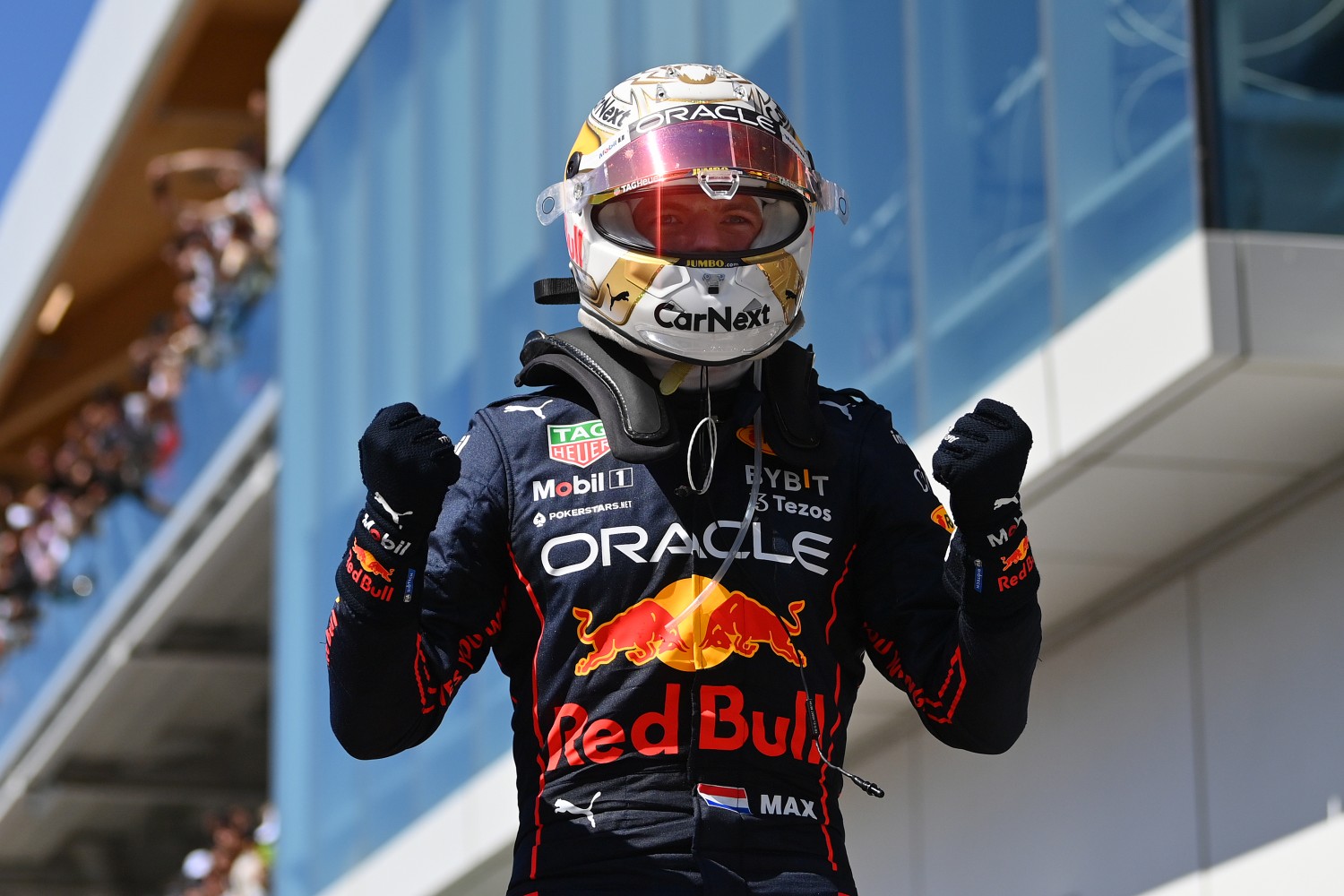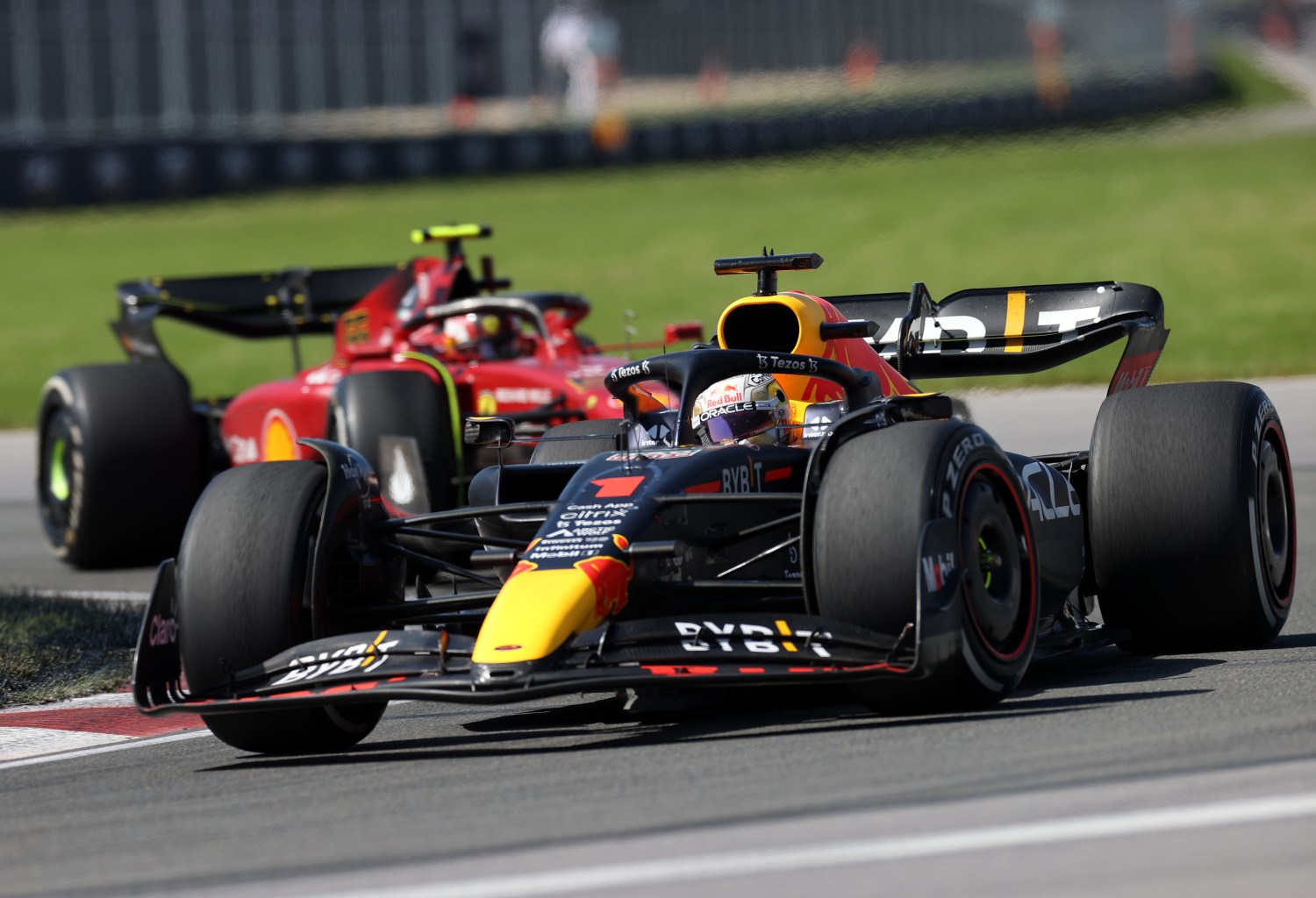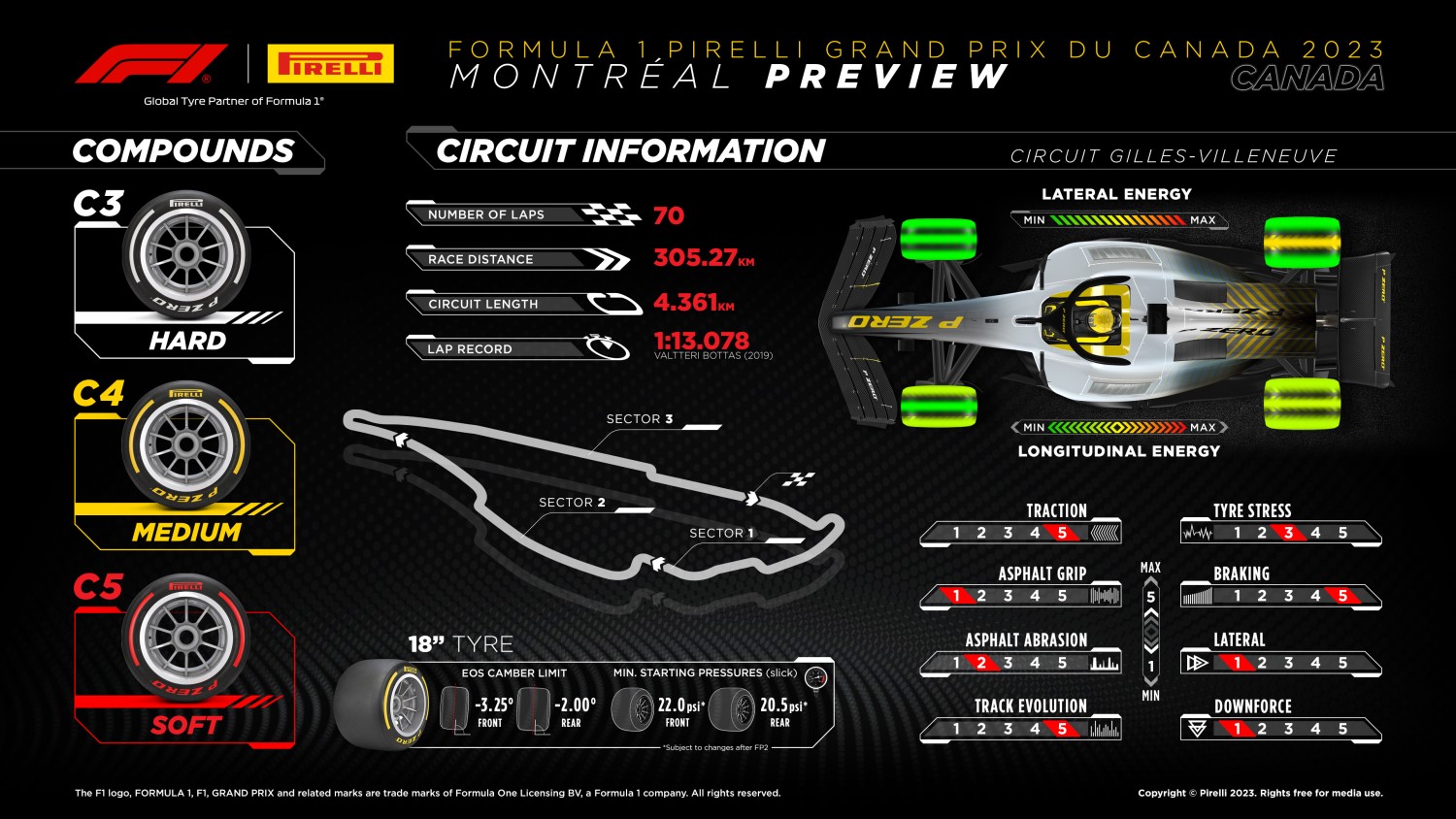F1: 2023 Canadian GP Preview
History
Canada initially became part of Formula 1’s calendar in 1967, switching between Mosport Park and Mont-Tremblant, before a semi-permanent circuit was formed on the man-made Ile Notre Dame in Montreal’s Saint Lawrence River in 1978.
That inaugural round was won by Canadian icon Gilles Villeneuve, after whom the circuit was named in 1982 following his untimely death. The ‘Salut Gilles’ signature still straddles the track’s start/finish line in his honor. Montreal swiftly established itself as one of Formula 1’s most popular venues, with the vibrant city opening its arms to the championship, and last season it made a successful return after a two-year pandemic-enforced absence.

The Circuit Gilles-Villeneuve looks simple on paper, given its length is just 4.3km and it has only seven complexes of note, but is deceptively challenging. The circuit is characterized by high-speed sections linked by medium-speed chicanes and a couple of heavy braking zones, with strong traction essential out of the slow-speed hairpins. The proximity of the walls adds to the challenge for drivers, none more so than at the final chicane, the exit of which is dubbed the Wall of Champions due to the number of elite competitors who have suffered costly accidents at the complex.

Last Year’s Race
Defending F1 World Champion and current points leader, Max Verstappen, had Carlos Sainz Jr. all over his tail when the green flew with 15 laps to go, and they battled hard lap after lap, but Verstappen had just enough pace in his #1 Red Bull to hold off the #55 Ferrari to the end.
Sainz, on newer tires, try as he might, just came up short by 0.993s, but he did manage to get the one point for fastest lap.

The Dutchman just didn’t make any mistakes out there, under extreme pressure from the Ferrari of Sainz. He picked up his sixth win of the season in nine races, and his first win in Canada and he extends his point lead over 2nd place Sergio Perez to 26 points.
Lewis Hamilton, who always runs well here, drove his best race of the year to take the final podium position, 7-seconds behind.
2022 Race Results
| POS | NO | DRIVER | NAT. | TEAM | BEHIND |
| 1 | 1 | Max Verstappen | NED | Oracle Red Bull Racing | +0.000s |
| 2 | 55 | Carlos Sainz | ESP | Scuderia Ferrari | +0.993s |
| 3 | 44 | Lewis Hamilton | GBR | Mercedes AMG Petronas | +7.006s |
| 4 | 63 | George Russell | GBR | Mercedes AMG Petronas | +12.313s |
| 5 | 16 | Charles Leclerc | MON | Scuderia Ferrari | +15.168s |
| 6 | 31 | Esteban Ocon | FRA | BWT Alpine F1 Team | +23.890s |
| 7 | 77 | Valtteri Bottas | FIN | Alfa Romeo F1 Team Orlen | +25.247s |
| 8 | 24 | Guanyu Zhou | CHN | Alfa Romeo F1 Team Orlen | +26.952s |
| 9 | 14 | Fernando Alonso | ESP | BWT Alpine F1 Team | +29.945s |
| 10 | 18 | Lance Stroll | CAN | Aston Martin Aramco Cognizant | +38.222s |
| 11 | 3 | Daniel Ricciardo | AUS | McLaren F1 Team | +43.047s |
| 12 | 5 | Sebastian Vettel | GER | Aston Martin Aramco Cognizant | +44.245s |
| 13 | 23 | Alexander Albon | THA | Williams Racing | +44.893s |
| 14 | 10 | Pierre Gasly | FRA | Scuderia AlphaTauri | +45.183s |
| 15 | 4 | Lando Norris | GBR | McLaren F1 Team | +52.145s |
| 16 | 6 | Nicholas Latifi | CAN | Williams Racing | +59.978s |
| 17 | 20 | Kevin Magnussen | DEN | Haas F1 Team | +68.180s |
| DNF | 22 | Yuki Tsunoda | JPN | Scuderia AlphaTauri | 49 laps |
| DNF | 47 | Mick Schumacher | GER | Haas F1 Team | 20 laps |
| DNF | 11 | Sergio Perez | MEX | Oracle Bull Racing | 7 laps |
Early Weather Forecast
Friday
Scattered thunderstorms, especially in the afternoon. High around 75F. Winds light and variable. Chance of rain 60%.
Saturday
Cloudy with showers. High 71F. Winds light and variable. Chance of rain 60%.
Sunday
Overcast with rain showers at times. High 72F. Winds light and variable. Chance of rain 60%.

What to Expect
Race interruptions
There hasn’t been a red flag here since the infamous 2011 Canadian Grand Prix, but Safety Cars are common: there have been five since 2014. Since the Virtual Safety Car (VSC) was implemented in 2015, there have been four deployments of the VSC and since then, only 2015 and 2019 have been Safety Car- or VSC-free.
Overtaking
It is possible to overtake here but the short lap and small speed differences mean gaining an advantage over the car ahead can be tricky. There have been 27 passes per race on average over the last three races – ignoring Safety Car restarts, red flag restarts and race starts – and the long straight after Turn 12 is the most popular passing zone.
Strategy
The softest tire compounds are in play this weekend. Normally, this is a one-stop race, but this year’s Canadian Grand Prix could be a two-stop contest owing to the ground-effect cars and high chance of Safety Car and Virtual Safety Car deployments. Thanks to the high-speed pit entry and short pitlane, it’s wise to stop during those cautions.
Unlocking the Lap
The lap begins with a short run to the hard braking zone at Turn One, a left-hander that immediately leads onto the second turn where drivers must hug the inside line for a fast exit onto the following straight. This leads onto the Turn Three-Four chicane, where plenty of curb is taken in an effort to gain time.

Turn Five is a flat-out left-hander that leads into a low-speed corner, Turn Six, where it’s important to set yourself up and accelerate out of Turn Seven and down the straight towards the Turn Eight-Nine chicane. Again, it’s worth taking plenty of curb – just avoid the looming walls on the exit.
Turn 10 is the hairpin, a hard braking zone that demands patience on the throttle before a long DRS straight. Turns 13 and 14 can make or break your lap. The key once again is to use the high Turn 13 curb as much as possible to accelerate out of Turn 14 while avoiding the infamous ‘Wall of Champions’ on the exit of this fiendishly tricky final chicane.
Fact File: Canadian Grand Prix
- The 4.361 km Circuit Gilles Villeneuve is similar in its characteristics to that of the Baku City Circuit in Azerbaijan. Long straights requiring lower drag are punctuated by slower speed corners such as chicanes and hairpins that require higher downforce.
- The 14 corners of the circuit comprise six left-hand and eight right-hand turns. Most of the corners are in a similar speed range, which is at the lower end of the scale compared to the rest of the circuits on the 2023 calendar.
- Several corners come as a double change of direction (left/right or right/left combinations) that require good responsiveness from the car. These include the combinations that comprise turns one and two, turns three and four, turns six and seven, turns eight and nine, and the final chicane at turns 13 and 14.
- The 405-meter pit lane ranks eighth in terms of length across all the circuits we race at. However, time expended during a pit stop is not especially high, as drivers are spared the inconvenience of going through the last chicane, instead entering the pit lane directly. Additionally, the pit exit feeds in at Turn two, thus drivers avoid having to negotiate the first corner too.
- The Circuit Gilles Villeneuve is traditionally regarded as tough on brakes, similar to the Austrian GP. However, there are usually fewer cooling problems in Canada than in Spielberg because the lap distance is greater and there is more time for the brakes to dissipate temperature.
- Although the track surface in Montreal is quite smooth, tire degradation is traditionally high. Combined with the track characteristics, which are of a stop-go nature, this improves the chances of overtaking and generally provides an entertaining race.
- In the past five editions of the Canadian Grand Prix, the safety car has been deployed three times. While not especially prevalent, due to the proximity of the walls and little run-off area, even relatively minor accidents can pose a threat of the safety car being deployed.
- Lewis Hamilton and Michael Schumacher share the record for the most wins at the Circuit Gilles Villeneuve with seven.
- The circuit is located on the Île Notre-Dame, an island that hosted the World Expo in 1967. The Expo 67 American Pavilion, which became the Montreal Biosphere and is now an environmental museum, is a visible reminder of this.

Pirelli Tires
MARIO ISOLA – MOTORSPORT DIRECTOR
“The Canadian Grand Prix is traditionally one of the most spectacular on the calendar, packed with incidents and surprises thanks to a track that offers plenty of overtaking opportunities but doesn’t take any prisoners. As is often the case for this type of circuit, we’ve brought the three softest tires in the range – C3, C4, and C5 – just like last year. We expect the C5 to be used mainly for qualifying, while the C4 and C3 are set to be favored for the race. The asphalt is fairly smooth with this semi-permanent street circuit not extensively used, meaning that we’re likely to see a high degree of track evolution over the weekend. On a track with no high-speed corners, the key factors are traction coming out of slow turns, stability under braking, and agility when changing direction. Another important element to consider is the weather. Conditions can change quickly, not just from wet to dry, but also with marked fluctuations in temperature. The asphalt temperature during last year’s qualifying was 17 degrees, while in the race it reached 40 degrees.”
THE TIRES ON TRACK
• For the Formula 1 Pirelli Grand Prix du Canada, the compounds chosen are C3 as P Zero White hard, C4 as P Zero Yellow medium, and C5 as P Zero Red soft.
• The Gilles Villeneuve circuit is a 4.361-kilometer semi-permanent track
• The race runs for 70 laps, consisting of six left turns and eight right turns with three straights (including a very long one). The average speed is relatively low, thanks to the frequent changes of direction caused by the close succession of corners, with continuous braking.
• The softer compound is usually seen only in qualifying, as was the case last year, when just the medium and hard compounds were used in the race. The strategy preferred by most drivers was a two-stop strategy, but some opted for a one-stopper with a very long initial stint on hard; especially those starting close to the back.
• Based on last year’s data, the average time taken for a pitstop is 18.5 seconds, despite more than 400 meters of pitlane. Drivers coming into the pits cut through the last chicane and skip the first corner, with the pit exit already in Turn 2

